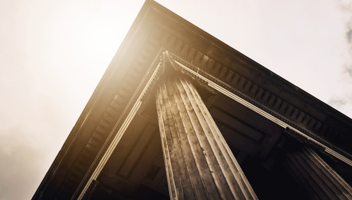Despite recent concerns as to the veracity of some online news content, the Internet remains an invaluable marketing tool for businesses, allowing them to reach customers far from where they are based. However, the rise in the prominence of social media platforms and the exponential growth of their content means that it has become increasingly difficult to keep track of all online posts relating to a business or product.
With counterfeit goods only a mouse-click away, even social media platforms are now at risk of being flooded. Instagram, like many other platforms, has recognised this issue and is fighting back, stressing that it takes “IP rights, including issues around counterfeiting, very seriously”. Instagram say they are allocating more resources to the reporting and removing of content which promotes counterfeit products. Insta-savvy consumers have the comfort of knowing that the platform are tackling the issue from the inside but should remain vigilant when purchasing. You know what they say about something being too good to be true…..
Beyond social media platforms, counterfeiters continue to peddle their illicit goods on websites and online marketplaces, such as eBay and Amazon. Scottish artist Jack Vettriano was recently successful in taking down a copycat website which used his name in order to sell fake versions of his work to unsuspecting art lovers. The fraudster’s website so closely resembled Mr Vettriano’s that unsuspecting consumers were duped into buying knock off paintings which were being passed off as official merchandise. The website domain, with only one character difference from Mr Vettriano’s genuine website, was registered in China.
The celebrated artist decided to utilise the dispute resolution service at Nominet – which oversees .uk domains – to take the forgers to task. Nominet’s Expert agreed that Mr Vettriano had shown rights in respect of a name or mark which was identical or similar to the domain name and that the website in dispute was an abusive registration of that name or mark. Consequently, the domain name was transferred to Mr Vettriano, who quickly put a stop to any further fraudulent activity on the website. Despite the Scottish artist’s victory, it is clear that brand owners of all kinds have a battle on their hands to curb the rise of counterfeit goods on the web.
We are all keenly aware of how quickly web pages, social media accounts and online marketplaces can pop up. When one dodgy website is taken down, more will soon take its place – with counterfeit goods in tow. Mr Vettriano’s case not only demonstrates that no business is immune to counterfeiting but also the importance of keeping up to date with the methods fraudsters use to further their illegal activity as technology develops.
So before we have holograms appearing in our living rooms offering to sell the latest designer handbag at a cut down price, brands should review their intellectual property portfolio and understand and utilise the various methods available to curb the spread of counterfeit goods, before their brand and reputation are irretrievably damaged and no one wants the “real deal”.
Written by
Related News, Insights & Events

Navigating legal and compliance challenges in the energy sector: from environmental risks to workforce management
01/10/2025 - The Marcliffe Hotel (N Deeside Rd, Pitfodels, Aberdeen AB15 9YA)
Navigating legal and compliance challenges in the energy sector conference - we will cover environmental risks to workforce management

The 2019 Hague Convention: a case to litigate, instead of arbitrate, cross-border disputes?
This insight explores the 2019 Hague Convention, in force in the UK from 1 July 2025, and what it means for cross-border enforcement of court judgments.

Top tips for employers facing personal injury claims
Guidance for employers on handling personal injury claims, including disclosure, insurance, stress at work, and settlement agreements, with practical tips to manage risk effectively.





